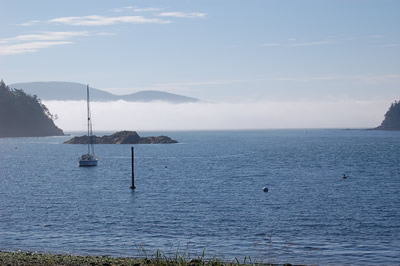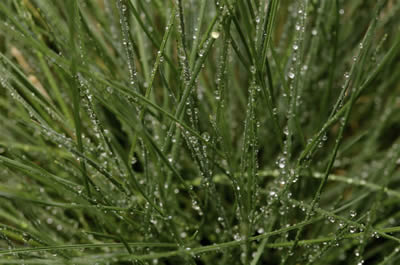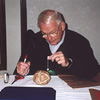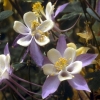This photo shows water drops that have condensed on blades of grass.
Click on image for full size
Image Courtesy of Taro Taylor, Creative Commons Attribution 2.0 License
Condensation
Condensation is the process by which water changes its state from a vapor or gas to a liquid. Condensation is responsible for the formation of clouds. Common examples of condensation are: dew forming on grass in the early morning, eye glasses fogging up when you enter a warm building on a cold winter day, or water drops forming on a glass holding a cold drink on a hot summer day.
Condensation occurs when water droplets form due to cooling air. When warm air cools, water leaves the vapor that is in the warm water and condenses into liquid.
You might also be interested in:

A snowman, glass of water and steam might look very different but they are made of the same stuff! Just like any substance, water can exist in three different forms, called states: solid, liquid and gas.
...more
A cloud is composed of tiny water droplets or ice crystals that are suspended in the air. A series of processes have to happen in order for these water droplets or ice crystals to form into clouds in the
...more
The Atacama Desert is one of the driest places on Earth. The lack of water makes life hard, yet more than a million people live there. One place where people get the water they need to survive is from
...more
Fog is a ground-level cloud. There are several ways that fog forms. It usually forms when moist air travels over cold land or water. The moist air cools down and the water vapor condenses and forms a cloud
...more
Stratocumulus clouds are commonly found over the ocean in the Southeast Pacific region. These clouds can contain clear areas in the clouds that scientists call "pockets of open cells," or POCs.
...more
When clouds form they contain millions of water droplets in each cubic meter of air. Each of the cloud droplets forms on a particle; scientists call a collection of particles an aerosol. These particles
...more
A rain shadow is a dry region of land on the side of a mountain range that is protected from the prevailing winds. Prevailing winds are the winds that occur most of the time in a particular location on
...more















